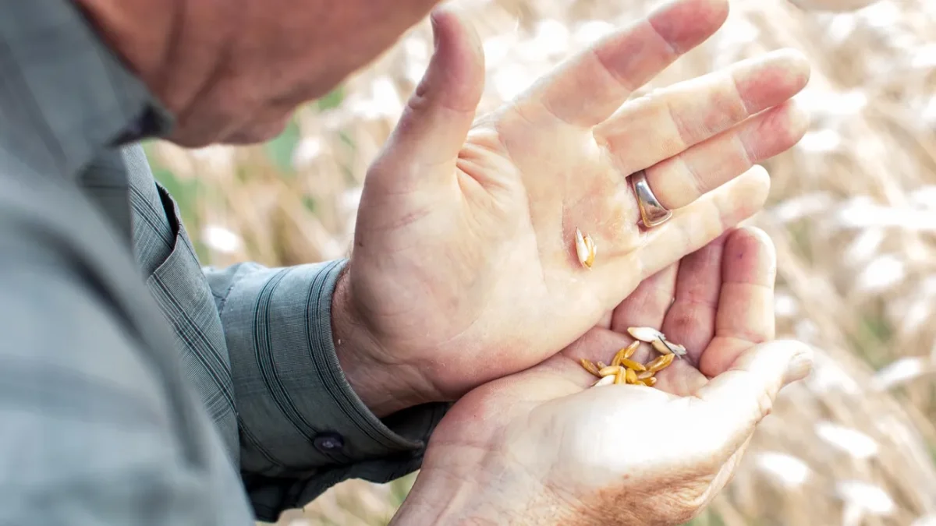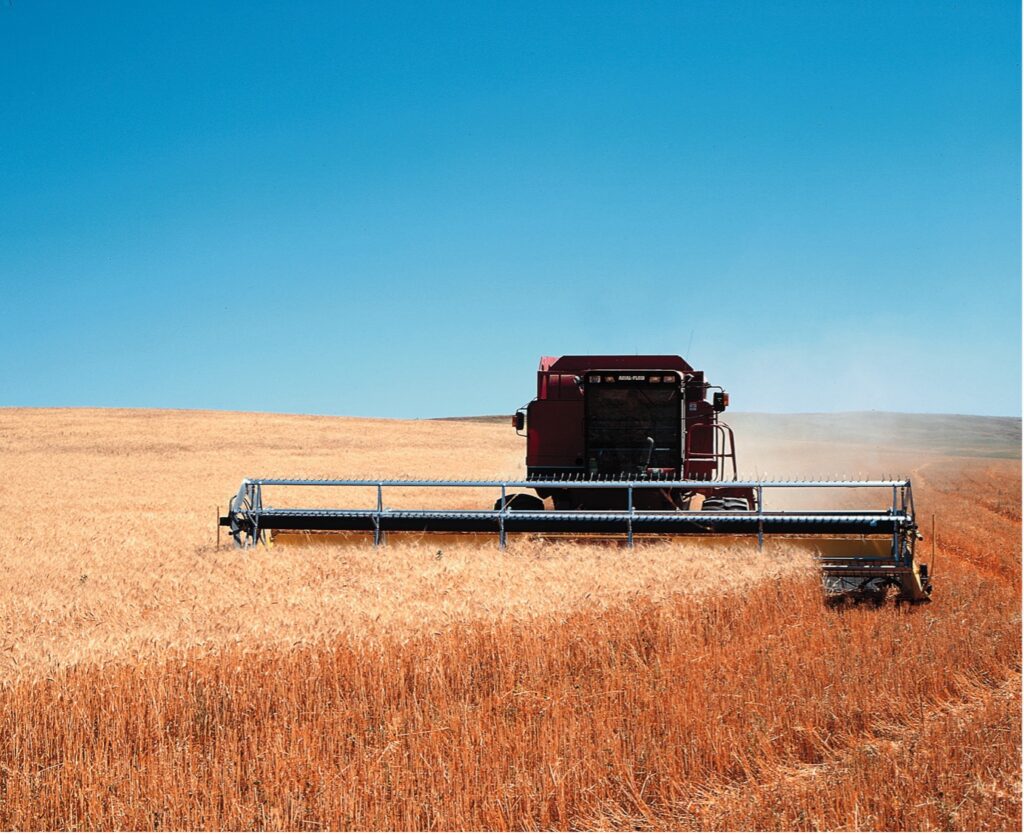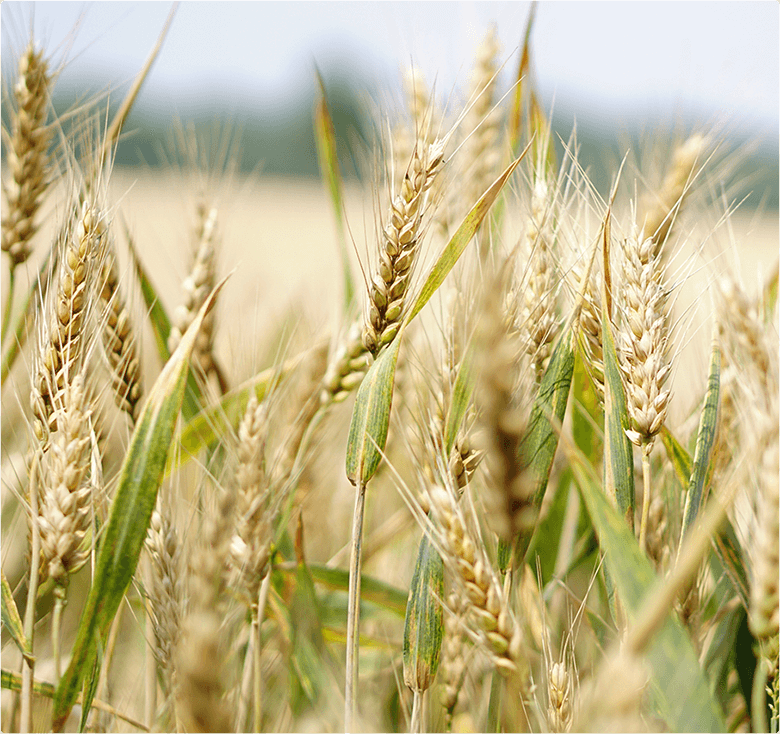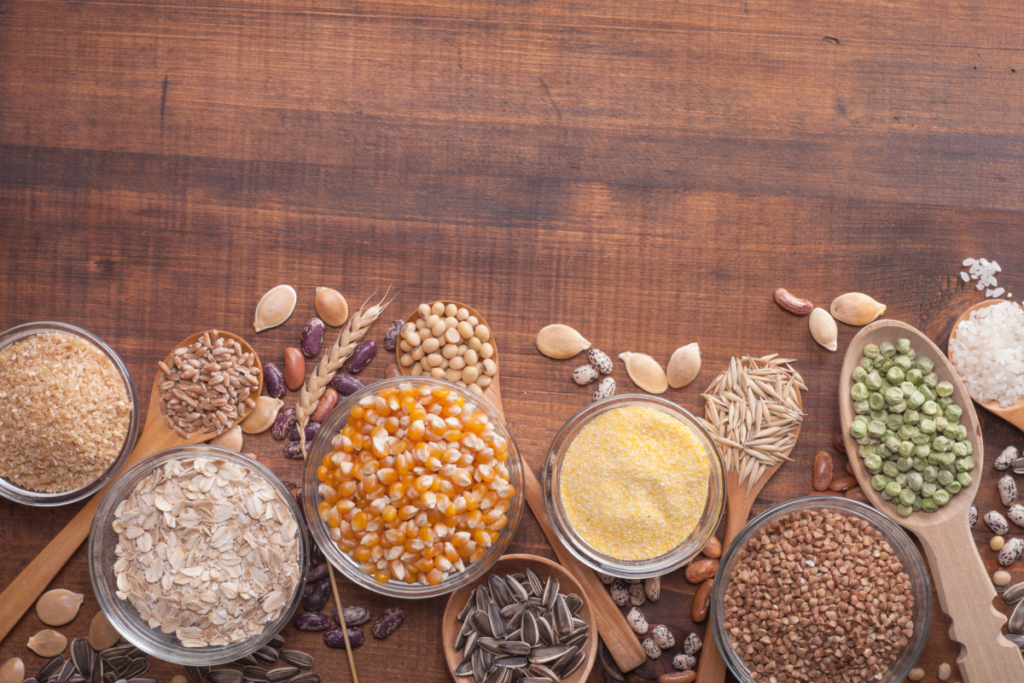This month, we are bringing back to our eco-maven’s section Kamut International founder and regenerative organic agriculture visionary Dr. Robert “Bob” M. Quinn, who has dedicated his life to promoting the philosophy of “food as medicine” as a means of incentivizing health and prevention of diet-related chronic diseases. His latest initiative is the Quinn Institute (QI), a research and demonstration hub designed to foster the evolution of regenerative organic agriculture and a place-based approach to solving the national food and health crisis.
1. Can you share with us the inspiration behind founding the Quinn Institute (QI)?
A few years ago, when it became clear to me that none of my children or grandchildren were showing interest in taking over the farm my grandfather had started in 1920, where three generations of Quinns had been raised, I decided to look for other alternatives to just renting out the farm, selling it or waiting for my children to inherit it when my wife and I are no longer here. At the time, I started thinking about taking part of the farm and creating a regenerative organic agricultural research institute. I have visited other great agricultural institutes, such as Rodale in PA, the Land Institute in KS and the Bread Lab in WA over the years. I began to imagine the scope and breadth that organic research might take on the Northern Great Plains and the great potential of combining all sorts of educational programs with research, just as they were doing. When I visited the Ethos project in the Long Valley of NJ, I saw a medical clinic established on a regenerative organic farm. They were prescribing food from the farm rather than pills from the pharmacy. I immediately knew I wanted to incorporate that model into my institute as a health component.
2. What is the overarching mission of the Quinn Institute (QI), and how do you see it evolving over the next decade?
The overarching mission and vision of the Quinn Institute is “Healing the Earth by Growing Food as Medicine.” In the first year, we created the legal structure for a nonprofit Montana corporation, registered Quinn Institute with the Montana Secretary of State, and received our 501(c)(3) tax-free designation. We held two strategic planning meetings, one in the summer with a dozen national leaders in organic research and one in the fall with local representatives of agricultural research, extension, and education, as well as organic farmers, processors, and representatives from neighboring indigenous communities. Many of each of those groups will form ongoing advisory councils for us. This year, we have hired a research coordinator and a communications and financial coordinator and have begun about a half dozen experiments.
Our grand opening and ribbon cutting ceremony was on July 9th this year as part of our first annual field day. Next year, we hope to begin our education outreach and, by the third year, begin to add the health component to our institute. We also started putting together this year a campus plan for buildings, housing students and staff as well as offices, classrooms, barns for large and small animals, sheds for machinery, as well as a shop for repairs, and grain bins for storage of crops. We hope to start our building program by our third year of operation and complete it in 5 years so that by the end of the first 10 years, we will have a full-fledged operating program with a staff of 10 to 12.

3. How does the Quinn Institute (QI) plan to advance the science and practice of regenerative organic agriculture?
We hope to advance the science and practice of regenerative organic agriculture by creating a research program that will help advance the science by understanding the principles by which these systems have successfully existed in the neighboring prairies since they were established in the distant past. Once these principles are well understood, experiments can be designed to discover which crops and which systems best mimic the short grass prairies which originally only produced grass, forbs, and legumes for animals large and small, birds, and the microbiome of the soil in a constant state of regeneration and cycling of nutrients. We want to discover systems that would have the same resiliency while allowing for the removal of a certain amount of nutrient-dense food for our people. The practice of regenerative organic agriculture will be advanced by helping farmers understand these principles and thereby help them to develop applications of these principles on their own farms, which we have learned at QI. We hope to do this with field days and tours in the summer, seminars in the winter, as well as producing publications available throughout the year. We will also have staff members who can visit interested farmers on their farms to help design and evaluate such systems and help address challenges that may arise.
4. Is it part of your plan to expand the Institute into different regions other than Montana?
We are located in the short grass prairie of the Northern Great Plains, which has a climate, topography, soils, fauna and flora animals and birds, and a resulting soil microbiome as well as a similar altitude which is common to a region that includes Eastern, Montana, South-east Alberta, Southern Saskatchewan, Western North, and South Dakota and isolated portions of Nebraska and Wyoming which gives us some longitude and latitude boundaries.
The research we will conduct at the Quinn Institute will have the greatest application and relevance for the farms of this region. Although the application of the principles we expect to learn will be limited to our region, we hope that the understanding of correct principles governing systems is something we could share throughout the country and the world. We have already been in cooperative efforts with Institutes such as Rodale for research projects testing general principles but using applications specific to our region. We see this type of cooperation as our future rather than the building of new Quinn Institute campuses throughout the country or the world.
5. How does the Quinn Institute integrate the idea of food as medicine within its programs and initiatives?
We intend to have medical providers on staff who specialize in chronic disease and mental health challenges that are influenced by diet. We plan to grow all types of fruits, vegetables, grains, seeds, poultry, and small and large animals for eggs, meat, and dairy products in a grass-fed regenerative system that produces the highest nutrient value possible. First, we want to begin with a seed that has the highest potential for good nutrition, raised in a system that allows for the greatest expression of this nutrient potential and then preserves the nutrient potential achieved by harvesting at peak quality and processing as minimally as possible. We want to avoid the loss of nutrition by over-processing and decreasing nutrient value with the addition of additives, which are detrimental to human health in any way. We want this nutrient-dense food produced at QI to be a source of nutrition for those being treated by the medical practitioners on staff. We also want to participate in the Food as Medicine movement nationally as well as an organizer of medical practitioners with similar goals from throughout the region to promote common goals and exchange ideas and success stories.

6. Can you describe the different agricultural systems demonstrated at the Institute and their potential benefits?
We have plans to implement and evaluate several different regenerative organic systems. We have a nine-year rotation, which Quinn Farm and Ranch has developed over the past four decades. We would like to compare this to systems that incorporate a number of Gabe Brown’s system (ND) of utilizing animals, aspects of particular systems (OH), which rely heavily on natural inputs that stimulate the soil microbiome, aspects of the perennial cropping system being developed by the Land Institute (KS), aspects of biodynamic systems with the help of experts from CO and no-till organic systems as developed by Rodale Institute in PA. Although these systems have demonstrated great promise in their own right, there has been little effort to compare or combine aspects of these systems. We think this can provide some great information that could have widespread positive applications for our region. We also have a non-organic system farmed by a neighbor across the road from us, which we hope will provide good control and opportunities to compare transition techniques to see which has the greatest advantage.
7. What role does the Quinn Institute play in promoting these environmental benefits on a national and global scale?
Our role in promoting environmental and other health benefits on a national and global scale will be through media, primarily social media, reports on our website, and publications that are widely available. We expect also to attend conferences and speak at national and international events to promote the ideals and results of research at QI.
8. How does the Quinn Institute foster a partnered environment and build an engaging community to address agricultural and health challenges?
We intend to partner on projects, activities and research programs with nearby university research centers, especially the two closest centers, which are within 50 miles (Havre) and 100 miles (Moccasin), with the local school in Big Sandy 12 miles away, with farmers of our region within about 200 miles, with processors and grain buyers who service our region and with an advisory group of health care professionals and researchers who want to focus on using food as medicine from around Montana.
9. Can you share some examples of collaborations or partnerships the Quinn Institute has formed to further its mission?
We hope to establish partners with three distinct groups: first, local organizations; second, private companies; third, universities; research centers; and other institutes with similar goals. So far, in the last 12 months of operation (since July 2023), we have established partnerships with groups or companies in all three categories. An example from each category follows:
- Pioneer producer’s lunch partnership – this is cooperation with a few local ranchers who are donating their open (not pregnant) grass-fed cows – which would normally be sold in the fall – to be made into hamburgers at a butcher shop at delivery at no charge to the school lunch program. This not only supplies much superior meat for lunches but also saves money by not having to buy meat, which can be used by the school to pay more for locally raised fruits and vegetables. Our portion of the partnership is to raise about 3000 pounds of organic potatoes for the school. We intend to have the grade school classes come out and see the potatoes dug by a team of horses. Then, the kids will pick up the potatoes from the field and put them in crates so they can be a part of producing their own food.
- We are partnering with a bakery in Missoula to produce a new strain of hard white winter wheat with superior taste (indicates high nutrition) and texture adapted to produce good crops in an organic system in our region. White wheat produces a tan whole wheat loaf of bread rather than a very dark loaf, which comes from red wheat and thereby will be in more demand in the marketplace.
- We are partnering with Montana State University’s Central Ag Research Center in Moccasin to study the importance of different rotations on soil and health and microbiology in organic systems.
10. What educational opportunities does the Quinn Institute offer for individuals interested in learning about regenerative agriculture and healthy food production?
We hope to hire staff next year to begin a mentoring program to help farmers individually reduce their chemical use or become completely organic. With this extra staff, we hope to begin short courses and seminars at QI. Until then, we had our first annual field day, during which about 85 people came to learn first-hand what we were doing and the philosophy we were following. This winter, we will be attending the annual meetings of all the farm organizations in Montana and presenting our work and the findings of our farmer-led research at QI. We hope to make this an annual event.
11. How do you envision the teaching kitchen and other facilities contributing to the Institute’s educational goals?
For those who do not have a farm but want to grow and enjoy some of their own food, we hope to have hands-on classes for gardening (designing, planting, tending and harvesting) as well as courses on fruit trees & berry bushes (selecting, planting, pruning and harvesting) – from the goods harvested or food bought in bulk at the store or farmer’s markets, we hope to teach all manner of food preparation right out of the garden, reusing leftovers to reduce waste and different methods of preservation such at canning, drying, juicing, freezing, fermenting and pickling for long term storage as well as demonstrations of storage of crops that need no processing before going into storage.

12. How does the Quinn Institute partner with health practitioners to align agricultural practices with health outcomes?
We hope to follow the model in operation at Ethos in Long Valley, NJ, where Dr. Ron Weiss has set up a plant-based food practice in the middle of his organic farm. He then can prescribe food from his farm. In his case, his practice is the centerpiece as he is the MD, and he has hired folks to develop his farm. In our case, the farm is the focus as I am a farmer while the health care service is a subsidiary. We hope to draw some local healthcare practitioners who can come at least part-time to concentrate on chronic disease and types of mental health challenges that can be helped with good food. As Ethos, we hope the doctors will prescribe food from the farm rather than pills from the pharmacy.
13. Can you provide insights into how the Institute’s initiatives can impact individuals battling chronic disease and mental health conditions?
We hope this can be done by doctors interested in joining us as a part of QI and treating the cause of these diseases with healing food rather than the symptoms with pills.
14. What are some of your long-term goals for the Quinn Institute, and how do you plan to achieve them?
Aside from the health aspect, which I’ve explained, we hope to start with some of our research programs this year, which will focus on the barriers farmers have to convert from chemical to regenerative organic farming – this will include an education program, including mentoring opportunities. For those already farming organically, we hope to help them overcome some of their greatest challenges, such as perineal weed management, so that they can continue to farm in that manner. In education, we hope to have hands-on short courses, long courses, and field days during the growing season, classroom courses, seminars, and presentations at annual farm meetings throughout the region, as well as farm-to-table seasonal dinners throughout the year.
We hope to have a place where folks can understand the importance of starting with the right seed, putting in living soil, harvesting at peak nutrition, preparing it for friends and family, and preserving it for the off-season. We also hope to foster ideas of all kinds of small-scale food production and processing which can be an income source as well as provide more local food for each community. We hope eventually to have facilities which can accommodate all of these activities and staff to carry them out. Most of these goals will only be accomplished by donors and supporters who might be willing to contribute to the success of the Institute. We hope to pay some of the operational bills by selling the crops we grow and the grants we might bring in, as well as the fees for classes.
15. Do you believe food as medicine will be adopted in the US and globally to change how we approach our food, our health and our planet?
I am encouraged by the fact that for about 10,000 years, our ancestors lived with this idea and practiced it for the most part. But will we change back to that system? There will be a change – the only question is how it will occur and how long it will take. I see two possible ways forward: one is by choice, which would be much easier and more fun, and the other is by force, which will be neither easy nor fun. Once we see that the modern system is unsustainable and become convinced of the need for change back to the ideas taught so many years ago, then there will be a change if we choose to make it. If we choose not to make it, then it will be forced on us by a healthcare system that will collapse because it is trying to treat so many sick people that it will eventually go broke and cause the government to go broke and will destroy our economy altogether. Small surviving communities will start over with the bare necessities.
16. If you could send a short message to the world, what would that be?
Medicine should be our food, and food should be our medicine.Medicine should be our food, and food should be our medicine.

17. What do you want your legacy to be?
I believe and have worked for decades in finding ways to accomplish and to teach the idea that we can heal the earth by growing food as medicine using the five pillars of production and processing, starting with good seed, planted in good soil made healthy by regenerative organic practices, harvest at peak nutrition, process minimally and distribute the food and feed the local community before exporting it to other regions – and do all this in a way where everyone wins, kindness and honestly prevail. Everyone has an appreciation for the creator of us all.
18. Lastly, what message would you like to share with environmentalists, agriculture innovators, and health advocates about the work being done at the Quinn Institute?
Join us in working together, sharing ideas and projects, and expanding the frontiers of knowledge, technology, and the education of folks to promote and advance what we agree upon and decide not to bash each other on those things we do not agree upon.
 Food
Food Farmers
Farmers Sustainable Living
Sustainable Living Living Planet
Living Planet News
News